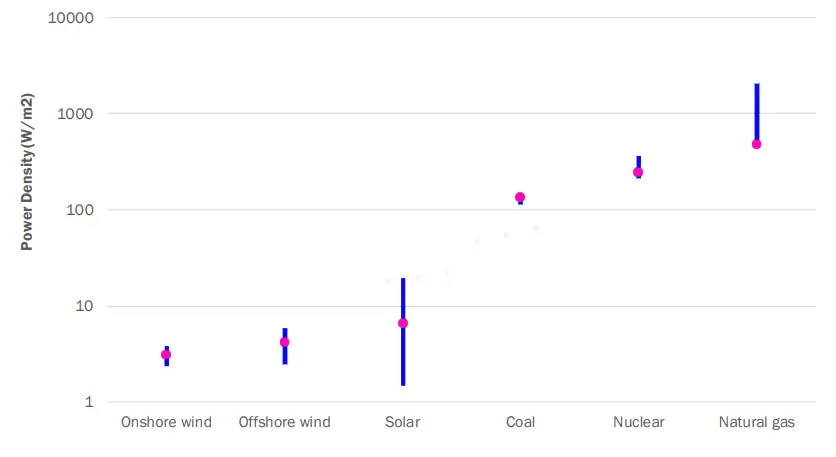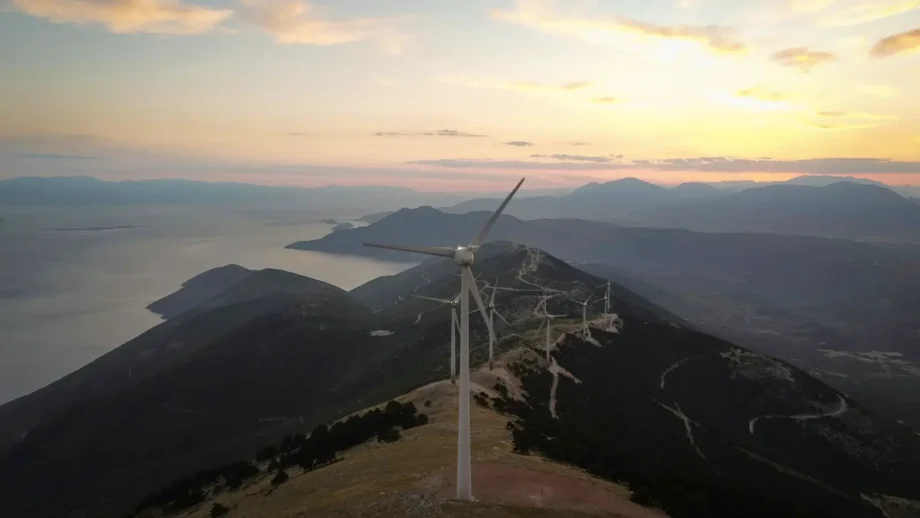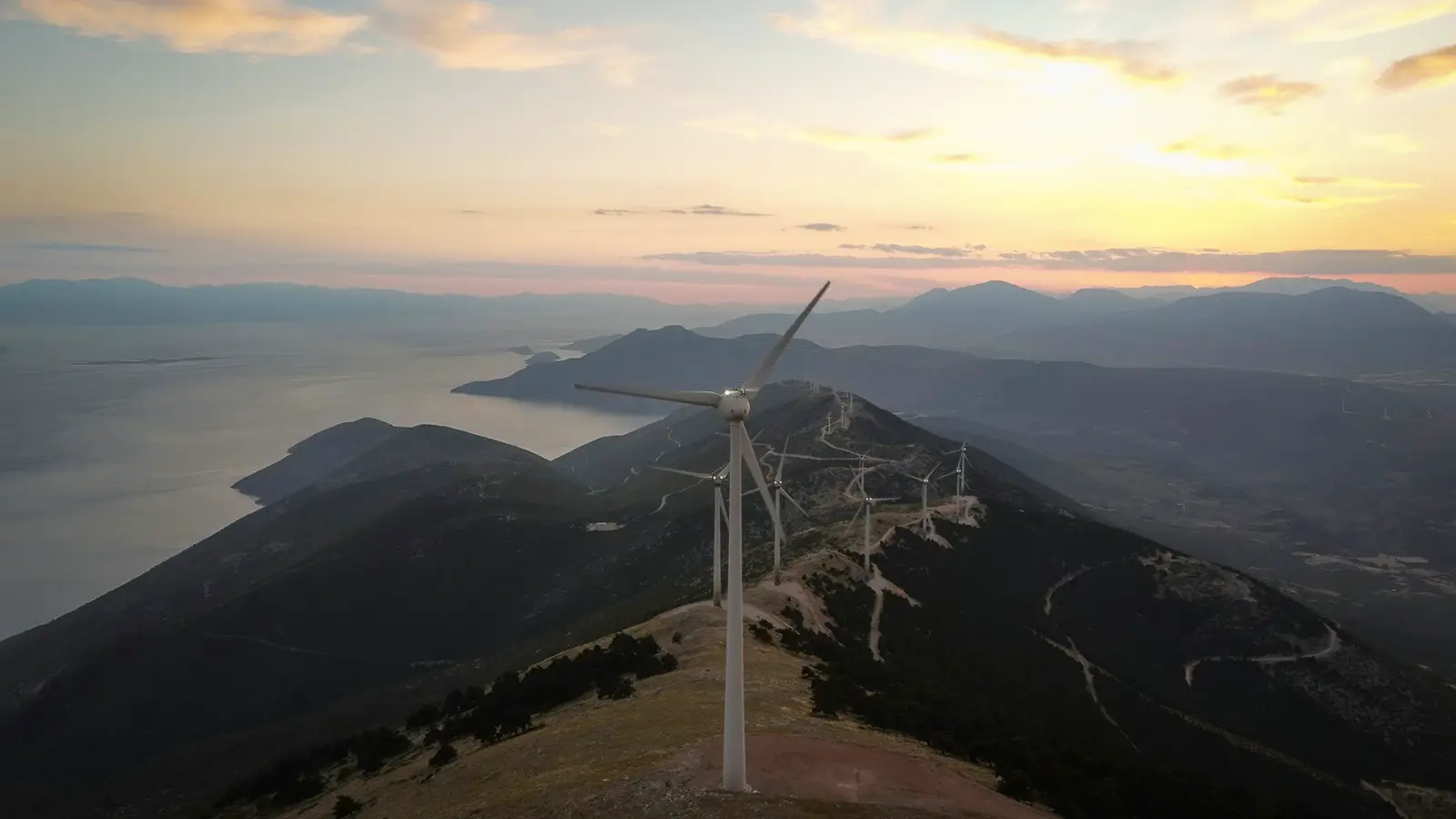The text discusses the significant impact of wind parks (αιολικά πάρκα) in Greece, shedding light on the fact that these parks occupy 3.5 times more land than the global average. The construction of these wind parks, primarily situated in mountainous regions characterized by steep terrain, results in an expanded land footprint due to the necessary interventions.
An intriguing detail emerges as one-third of the wind parks in the country required the creation of 116 km of new roads and the widening of existing roads by an additional 157 km over the last two decades.
These insights are drawn from a comprehensive study conducted by the Biodiversity Conservation Laboratory at the University of Ioannina, funded by the Hellenic Society for the Protection of Nature (ΟΦΥΠΕΚΑ). The study takes a close look at the ground impact of wind parks, encompassing the space occupied by wind turbines along with their accompanying infrastructure.
A noteworthy revelation from the study is that the artificial surfaces developed for wind parks in Greece are 3.5 times larger than the global average, translating to 7,729 square meters per MW of generated energy. The study underscores the concerning trend of establishing wind parks in mountainous and forested areas, posing a substantial threat to ecosystems. Specifically, more than 90% of the studied wind parks are situated in the mountainous regions of Greece.
In response to these findings, the study recommends incorporating the minimization of land use as a crucial criterion in the future spatial planning for Renewable Energy Sources (ΑΠΕ) in Greece.
The proposal involves strategically placing wind parks outside roadless areas, areas of high ecological sensitivity, and within landscapes that are more influenced by human activities, characterized by gentler slopes and existing artificial surfaces and road networks.
The utilization of renewable electricity requires a larger land footprint compared to the fossil fuel system.
Generating renewable electricity demands a more extensive land footprint when juxtaposed with the fossil fuel system. This is attributed to the spatial requirements of renewable energy infrastructure, which often entails expansive areas for solar and wind installations. Unlike fossil fuel facilities, renewable energy sources necessitate larger land allocations, contributing to a distinctive environmental impact. The broader land use associated with renewable electricity underscores the challenges and considerations in transitioning to cleaner energy alternatives.
Power Density
Power density refers to the land surface area required to generate a specific amount of energy, serving as a crucial metric in assessing energy production efficiency. This metric is commonly employed to analyze renewable energy sources, determining the extent of land coverage needed for solar panels or wind turbines to generate power.
Various factors contribute to the overall power density calculation, encompassing the average intensity and duration of sunlight or wind, along with the conversion efficiency of the solar panels or wind turbines.
While power density is commonly associated with renewable energy, its applicability extends to fossil fuel-based systems, such as natural gas and coal. This involves evaluating how the land use of a renewable-based power system compares to the existing fossil fuel-based system. In the case of natural gas and coal, calculating power density entails accounting for the land area disturbed during the extraction and processing of gas or coal, their transportation to power plants, and the subsequent electricity generation process.
This comprehensive analysis offers insights into the land use implications of different power generation methods, providing valuable information for sustainable energy planning and decision-making.
Onshore Wind Energy Projects and Power Density: The Numbers
While power densities for fossil fuel electricity production can vary, let’s focus on approximate estimates more relevant to Greece. Notably, the lowest power density resources tend to be economically impractical. In Greece or Europe, specific power density figures may differ from those in the United States.
In the context of Greece, the power density of the fossil fuel electricity system is likely to exhibit variations. Unfortunately, specific figures for Greece’s power density are not provided here, but it’s essential to consider factors such as regional energy consumption patterns, resource availability, and infrastructure.
To illustrate the concept, let’s consider a scenario akin to the U.S. context. In the U.S., the fossil fuel electricity system has a power density ranging from less than 200 to nearly 1,000 watts (W) per square meter (W/m2). Applying a similar analysis to Greece, the average household electricity consumption and the corresponding power generation capacity needed would depend on regional factors.
For instance, assuming an average household in Greece requires a power generation capacity of 2,500 W to maintain a consistent electricity supply, this would translate to an approximate disturbed area of 2.5 to 12.5 square meters. This range provides a general perspective, but it’s crucial to recognize that Greece’s specific conditions and energy landscape will influence these figures.
Understanding power density in the context of Greece is vital for assessing the land footprint of different power generation methods and their environmental implications within the region.
The power density of renewable power in Greece presents a notable distinction, being one to two orders of magnitude lower than that of fossil fuel power. This implies that renewable power in Greece requires a significantly larger land area, approximately ten times more per unit of power produced. For instance, solar photovoltaic cells in sunny locations in Greece may have a power density of around 10 W/m2, while wind power density is approximately 1 to 2 W/m2.

It’s essential to recognize that these power density values are averages over time, accounting for the intermittent nature of wind and solar energy sources. In Greece, where sunlight and wind are intermittent, the actual power density values may vary based on local climatic conditions. Maximum instantaneous power density values for renewable sources would likely be much larger.
Moreover, these power density calculations encompass the entire land area of a solar or wind facility in Greece, including access roads and the necessary spacing between wind turbines for optimal operation. Understanding the specific power density characteristics of renewable power in Greece is crucial for informed decision-making regarding land use, environmental impact, and the overall transition to sustainable energy sources in the region.
The research, conducted with the aim of addressing the environmental impact of wind energy development in Greece, not only highlights the challenges but also provides valuable recommendations for sustainable practices in the realm of renewable energy.
research
onshore Wind Parks in Greece: Confronting Reality: The Consequences of Continuously Ignoring Environmental Facts
the wind engineer
Crafting Meaningful Impact Mitigation Plans
Onshore wind energy projects, while contributing to sustainable energy production, can have negative impacts on the local ecosystem. Some of the key concerns include:
- Habitat Disruption: The construction of wind turbines and associated infrastructure can disrupt local habitats. Clearing land for turbines, access roads, and other facilities may lead to the loss or fragmentation of natural habitats, affecting local flora and fauna.
- Wildlife Disturbance: The presence of wind turbines can disturb wildlife in the area. Birds and bats, in particular, may collide with the turbine blades, leading to injuries or fatalities. Additionally, the noise generated by the turbines can interfere with the communication and behavior of certain species.
- Visual Impact: Wind turbines alter the visual landscape, and some people may find them aesthetically unpleasing. This visual impact can affect tourism and the overall enjoyment of natural surroundings.
- Soil Erosion and Runoff: The construction phase of wind projects may result in soil disturbance, leading to erosion and increased runoff. Sedimentation in nearby water bodies can impact water quality and aquatic ecosystems.
- Microclimate Changes: The alteration of land surfaces and the presence of large structures like wind turbines can influence local microclimates. Changes in temperature, humidity, and wind patterns may have indirect effects on plant and animal life in the area.
- Infrastructure Development: Building access roads and other infrastructure for wind projects may involve significant land development. This can further fragment habitats, increase impermeable surfaces, and contribute to the loss of natural landscapes.
- Cumulative Impact: Multiple wind projects in a region can have cumulative effects on the ecosystem. The combined footprint of multiple developments may exacerbate habitat loss and other environmental concerns.
It’s important to note that addressing these issues often involves careful planning, site selection, and mitigation measures. Sustainable practices, ecological assessments, and community engagement can help minimize the negative impacts of onshore wind energy projects on the local ecosystem.
NATURA 2000 & Onshore Wind Energy Projects: Beyond Buzzwords to Ethical Performance
Natura 2000 is a network of protected areas in the European Union established to safeguard and preserve biodiversity. The negative effects of onshore wind energy projects in Natura 2000 protected areas include:
- Habitat Fragmentation: Wind energy projects can lead to habitat fragmentation within Natura 2000 areas. The construction of turbines and associated infrastructure may divide natural habitats, making it challenging for species to migrate and maintain genetic diversity.
- Disturbance to Wildlife: The presence of wind turbines can disturb and pose a threat to wildlife within protected areas. Birds and bats, which are often present in Natura 2000 sites, may be at risk of collisions with turbine blades, leading to injuries or mortality.
- Impact on Rare and Endangered Species: Natura 2000 areas are designated to protect rare and endangered species and habitats. Wind energy projects may directly impact these species by altering their habitats, causing displacement, or disrupting their normal behaviors.
- Noise and Visual Impact: The noise generated by wind turbines and their visual impact can disturb both wildlife and visitors to Natura 2000 areas. Species sensitive to sound may be negatively affected, and the altered visual landscape can detract from the overall natural experience for visitors.
- Changes in Hydrology: Construction activities and changes in land use associated with wind projects may lead to alterations in hydrological patterns, affecting water bodies within Natura 2000 sites. This can have consequences for aquatic ecosystems and the species that depend on them.
- Cumulative Impact: The cumulative effect of multiple wind energy projects within or near Natura 2000 areas can intensify negative impacts. The combined footprint and operational effects of several projects may result in significant ecological changes.
- Threats to Ecosystem Services: Natura 2000 areas provide essential ecosystem services, such as clean water, pollination, and carbon sequestration. Wind energy projects may pose a threat to these services through changes in land use, potential pollution, or alterations to local ecosystems.
It is crucial to conduct thorough environmental impact assessments and adhere to strict regulations and guidelines when considering wind energy projects in Natura 2000 areas. This involves balancing the need for renewable energy with the conservation of biodiversity and the protection of valuable ecosystems









Your post is not just great; it\’s outstanding! It\’s evident that you put a lot of effort into creating this, and it shows. I look forward to your future posts.\”
Thank you for taking the time to share your thoughts. Your positive feedback is a reminder of why I love what I do.
I\’m so glad I stumbled upon this post. It\’s a breath of fresh air in the crowded world of WordPress content. Keep up the excellent work!
Thank you so much for your kind words! I\’m thrilled to hear that you enjoyed